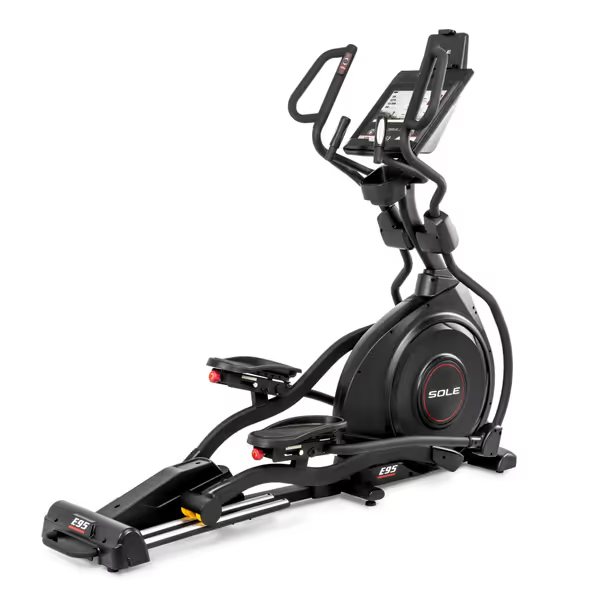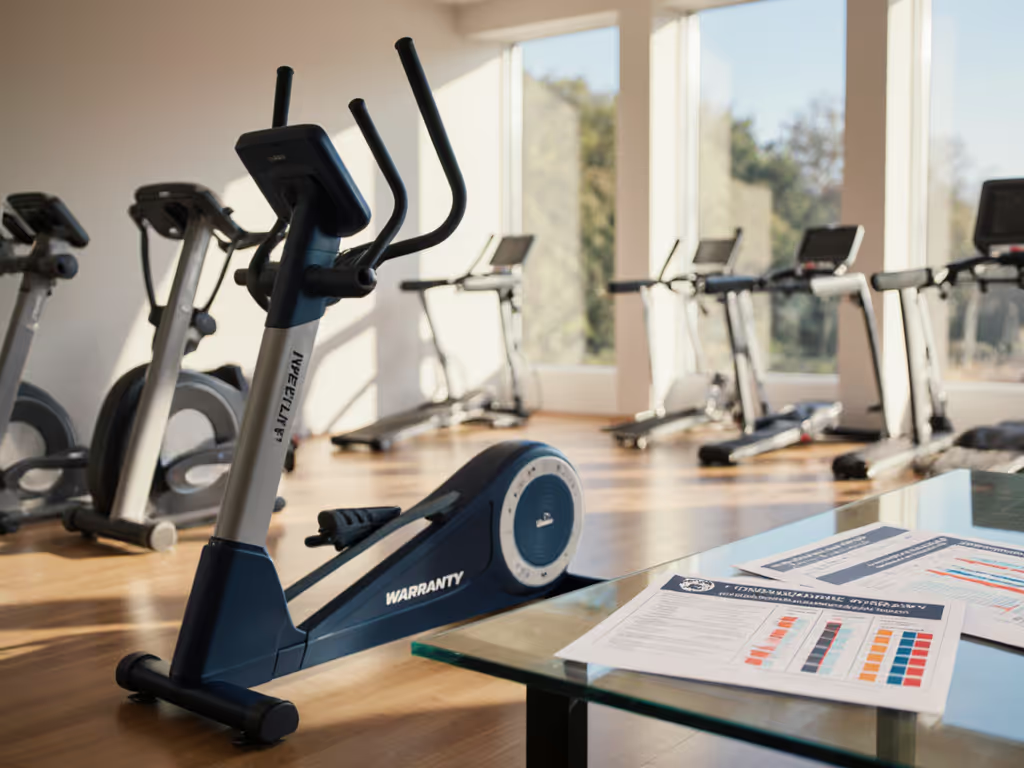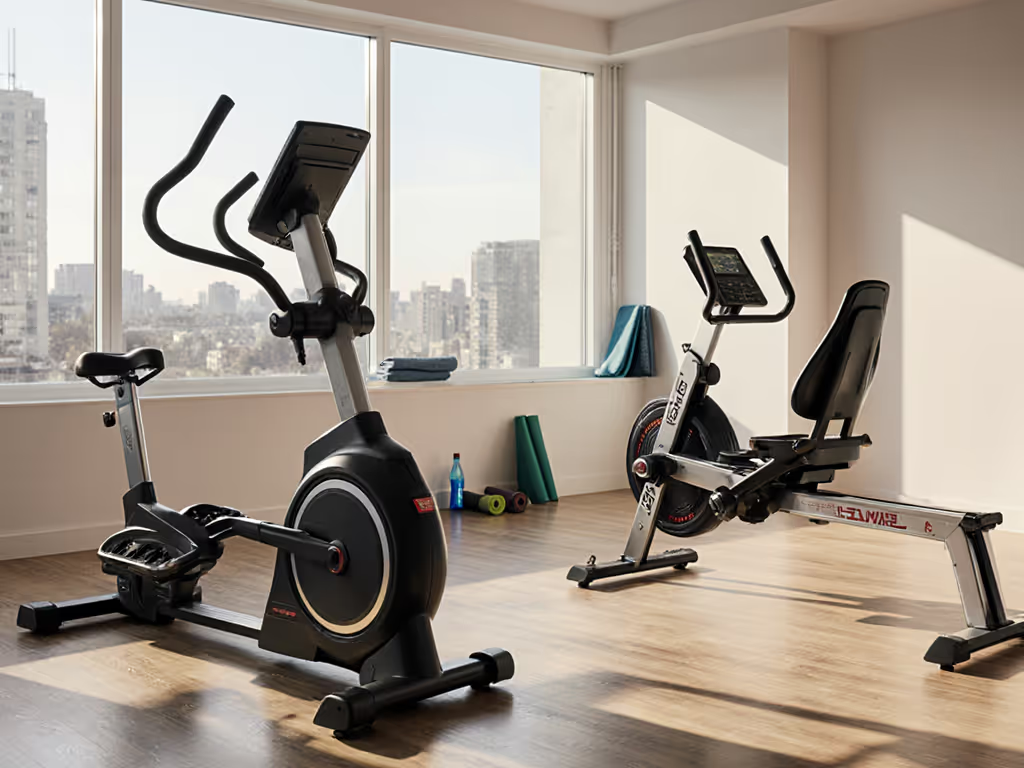
Commercial Elliptical Machines: True Cost Per Workout Revealed

When you're researching commercial elliptical machines, most reviews focus on flashy specs and price tags rather than what truly matters: will this become a reliable part of your daily life? That's where I come in. As someone who rebuilt my fitness routine after a wrist injury using just two non-negotiables: zero setup friction and sessions short enough to finish before coffee, I've learned that elliptical machine fitness is measured not in watts or stride lengths, but in consistent, sustainable use. Today, we'll cut through the marketing noise and reveal exactly what makes a machine worth its cost per workout.

SOLE Fitness Elliptical
The Hidden Cost of "Cheap" Decisions
Let's address the elephant in the room: that $599 elliptical might seem like a steal until it becomes a $599 clothes rack after three months. You've probably experienced this cycle: excited purchase, initial enthusiasm, then growing frustration with awkward movements, confusing consoles, or the dreaded step-up height that makes mounting feel like scaling a wall. Each time you avoid using your machine, you're not just wasting money, you are eroding your confidence in your ability to stick with fitness habits.
Small, repeatable wins turn cardio into a lifelong habit.
The pain points I hear most from time-crunched professionals like you:
- Space anxiety: Will this fit in my 10x10 spare room without blocking the door?
- Decision fatigue: Confusing spec sheets about flywheel weights and Q-factors with no plain-language translation to comfort
- Consistency killers: Machines that require complicated setup or feel uncomfortable from day one
- Subscription dread: Paying monthly fees just to access basic workout tracking See the 5-year breakdown in our elliptical subscription cost analysis.
I've sat with dozens of clients who purchased "high-end" ellipticals only to abandon them because the step-up height strained their knees or the console required 17 steps to start a basic workout. These aren't failures of motivation, they are failures of thoughtful design that ignores how real people actually live.
Why Your Current Approach to Research is Costing You Money
Most buyers focus on three flawed metrics:
- Upfront price (without calculating cost-per-use)
- Feature count (without determining which features actually support daily use)
- Brand reputation (without verifying if their design philosophy matches your habit goals)
Let's expose the reality: a $1,000 machine used 5 times becomes a $200 per workout investment. That same machine used 500 times? Just $2 per workout. The math is brutally simple, yet almost every review ignores this critical equation.

Take the common struggle with stride length. Many buyers meticulously measure their inseam but still end up with a machine that feels choppy or awkward. Why? Because stride length specifications rarely account for how your height, flexibility, and natural gait interact with the machine's Q-factor (the distance between pedals). A 20-inch stride might feel perfect for someone 5'8" but uncomfortably short for a 6'2" user, yet both could be purchasing the same "best rated home elliptical." If you're over 6 feet, our stride length guide for tall users can help you avoid a choppy or cramped feel.
Similarly, flywheel weight gets excessive attention without context. That 30-pound flywheel on a premium model? It's not about "better" performance, it's about creating momentum that maintains smooth rotation through your entire pedal stroke. For someone rebuilding knee strength, this smoothness could determine whether they use the machine daily or avoid it due to joint discomfort.
The Cost-Per-Use Framework That Changes Everything
Forget traditional comparisons. Let's evaluate machines through the lens of daily usability (the single factor that determines your elliptical cost-per-use over time).
The Daily Usability Checklist
Before purchasing, ask these questions that actually predict long-term use:
- Setup friction test: Can you start a workout in under 30 seconds?
- Step-up height check: Does it require less than a 6-inch lift to mount? (Critical for knee comfort and daily consistency)
- Handle comfort assessment: Can you maintain relaxed shoulders throughout your workout?
- Space reality check: Does it fit your actual room dimensions with 12" clearance on all sides?
- Decision fatigue score: How many steps does it take to start your favorite workout?
The Longevity Multiplier
Not all machines deliver equal value over time. Consider these factors that impact high-end elliptical longevity:
- Warranty coverage that matters: Lifetime frame/flywheel coverage (not just 30 days on electronics)
- Service network accessibility: Can local technicians service it, or must you wait weeks for brand-specific parts?
- Modular design: Can you replace individual components rather than the entire console?
- Open ecosystem compatibility: Works with your existing apps without mandatory subscriptions Already own a machine? Follow our elliptical maintenance guide to extend life and prevent costly repairs.
Product Comparison: What Actually Matters for Daily Use
Let's apply our framework to popular models, focusing on what determines actual cost-per-workout rather than marketing claims.
SOLE Fitness Elliptical Series
The SOLE line stands out for its commitment to reducing friction in daily use. What makes their approach special:
- Step-up height: The E35's 9-inch step-up (lower than competitors' 12-14" heights) requires less knee flexion to mount
- Console simplicity: Physical resistance and incline buttons let you adjust on the fly without pausing your workout
- Worm drive pedal adjustment: Unique feature that angles pedals to reduce strain on Achilles tendons
- No mandatory subscriptions: Basic tracking works without paid memberships
The E95 model represents exceptional value when calculating commercial elliptical longevity. With its 27-pound flywheel ensuring smooth motion through every stroke and lifetime frame warranty, it's engineered for daily use. Its 13.3" touchscreen provides guided workouts through the free Sole+ app, but crucially, you can ignore all that and simply press "Quick Start" for immediate use.
NordicTrack AirGlide 14i
This model excels in guided training but introduces potential friction points:
- Pros: iFIT programming creates engaging variety; incline/decline functionality adds workout diversity
- Cons: Complex interface requires more steps to start; higher step-up height (12") creates barrier for knee-sensitive users
- Reality check: Perfect if you'll use iFIT daily, but becomes expensive clutter if you prefer simple workouts
Bowflex Max Trainer M6
A compact option with unique stair-stepping motion:
- Pros: Extremely space-efficient; delivers intense workouts in minimal time
- Cons: Unnatural movement pattern for some users; higher impact than traditional ellipticals
- Best for: Those with severe space constraints who prioritize workout efficiency over traditional elliptical motion For a bigger-picture look at how these brands differ, see our Sole vs NordicTrack vs Bowflex comparison.
Making Your Choice: The Habit-First Buying Guide
Don't buy based on specifications alone. Instead, prioritize these evidence-based factors that determine whether you'll actually use your machine:
1. Measure Your Friction Threshold
Before purchasing, determine your personal tolerance for setup complexity:
- Low-friction users (most successful with daily habits): Prioritize machines with one-touch start, minimal assembly, and intuitive controls
- Tech enthusiasts: Can handle more complex interfaces but should verify actual ease of daily use
2. Test the Step-Up Height
This single measurement predicts long-term use better than any spec sheet:
- Ideal: 6-10 inches (feels natural without knee strain)
- Problematic: 12+ inches (creates daily barrier, especially for those with knee concerns)
3. Verify Real-World Noise Levels
Ask not "how many decibels?" but "will this disturb others during morning/evening use?"
- Test method: Watch videos with audio recorded from adjacent rooms
- Red flag: Any machine where you hear clicking, grinding, or inconsistent resistance
4. Calculate Your True Cost-Per-Use
Use this simple formula:
(Price - Resale Value) ÷ (Weekly Uses × 52 Weeks × Years of Expected Use)
A $1,500 machine used 4x weekly for 8 years costs just $0.72 per workout. The same machine used only 4x total costs $375 per workout.
The Sustainable Path Forward
Your goal isn't to buy the "best" elliptical, it's to buy the machine most likely to become part of your daily rhythm. For most time-crunched professionals, this means prioritizing:
- Zero-setup friction (physical and mental)
- Comfort that supports pain-free movement
- Space efficiency without compromise
- Open technology that works with your existing ecosystem
The SOLE E95 emerges as our top recommendation for most buyers because it transparently addresses the friction points that derail consistency. Its thoughtful design (particularly the manageable step-up height, physical control buttons, and pedal angle adjustment) creates an experience where mounting the machine feels like a natural extension of your morning routine rather than a chore.

Remember my own experience after that wrist injury: I committed to sessions short enough to finish before coffee, with zero setup time. That simple framework kept me moving daily until it became automatic. Your machine shouldn't require extraordinary motivation, it should invite ordinary consistency.
Final Verdict: Your True Value Calculator
When evaluating commercial elliptical machines, shift your perspective from "What does this cost?" to "What does consistent use cost me per workout?"
For most buyers seeking sustainable home fitness: The SOLE E95 delivers the optimal balance of daily usability features, space efficiency, and proven longevity. Its thoughtful design minimizes the friction points that derail consistency while providing genuine adaptability for different body types and fitness levels.
For space-constrained apartments: The Bowflex Max Trainer M6 offers remarkable efficiency in minimal footprint, though verify the movement pattern suits your biomechanics.
For dedicated fitness enthusiasts who'll use guided programming daily: The NordicTrack AirGlide 14i provides engaging content, but only if you're certain you'll use those features consistently.
The most expensive machine isn't necessarily the best value, and the cheapest often becomes the most expensive through disuse. Focus instead on the machine that will make your daily habit feel effortless.
Sustainable comfort isn't just nice to have, it is the shortest path to consistency. When your equipment supports rather than fights your natural movement patterns and daily rhythms, you stop counting workouts and start living a fitter life. Make it easy, make it daily, that is where true value lives.




